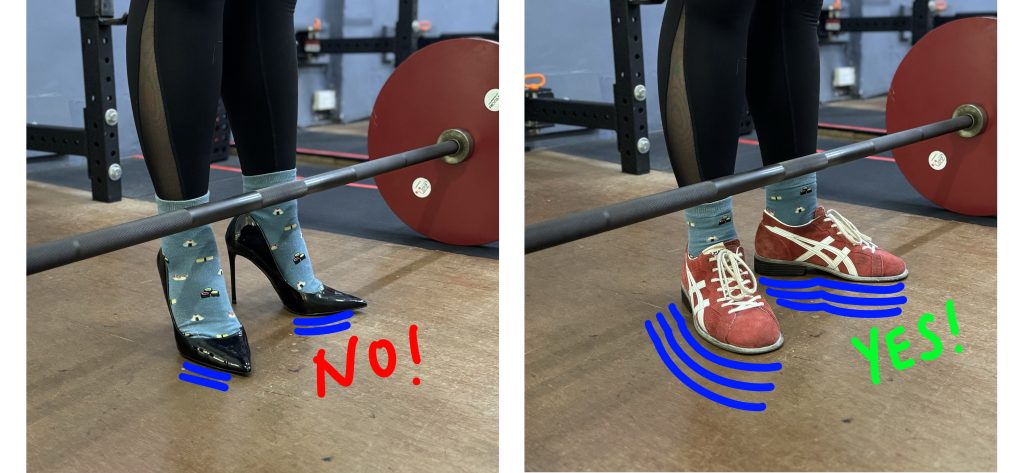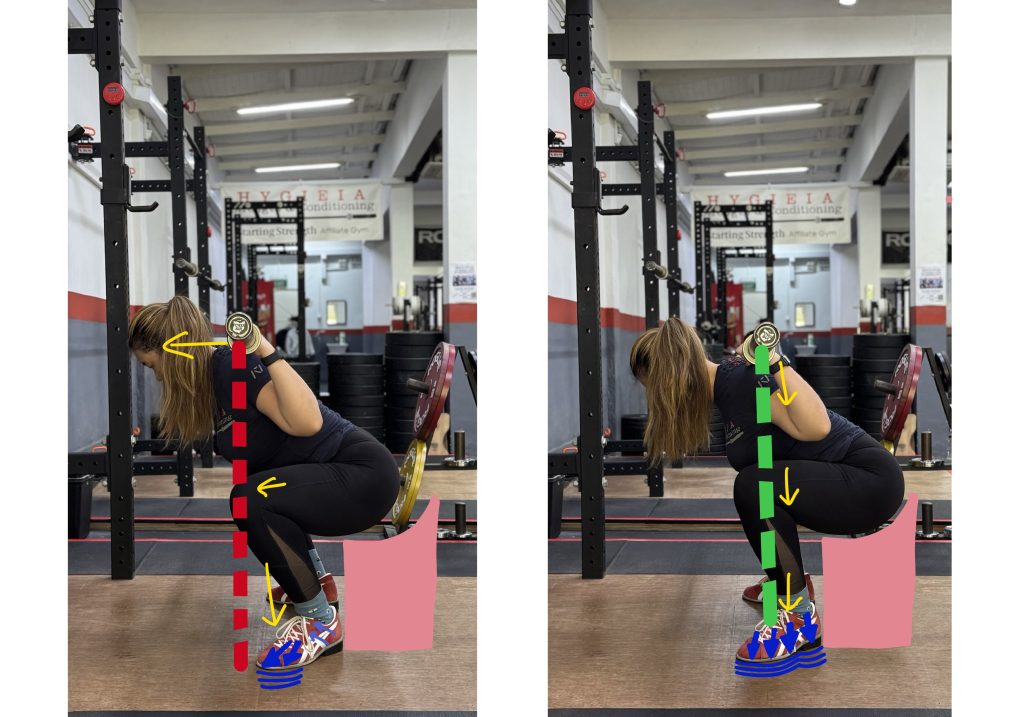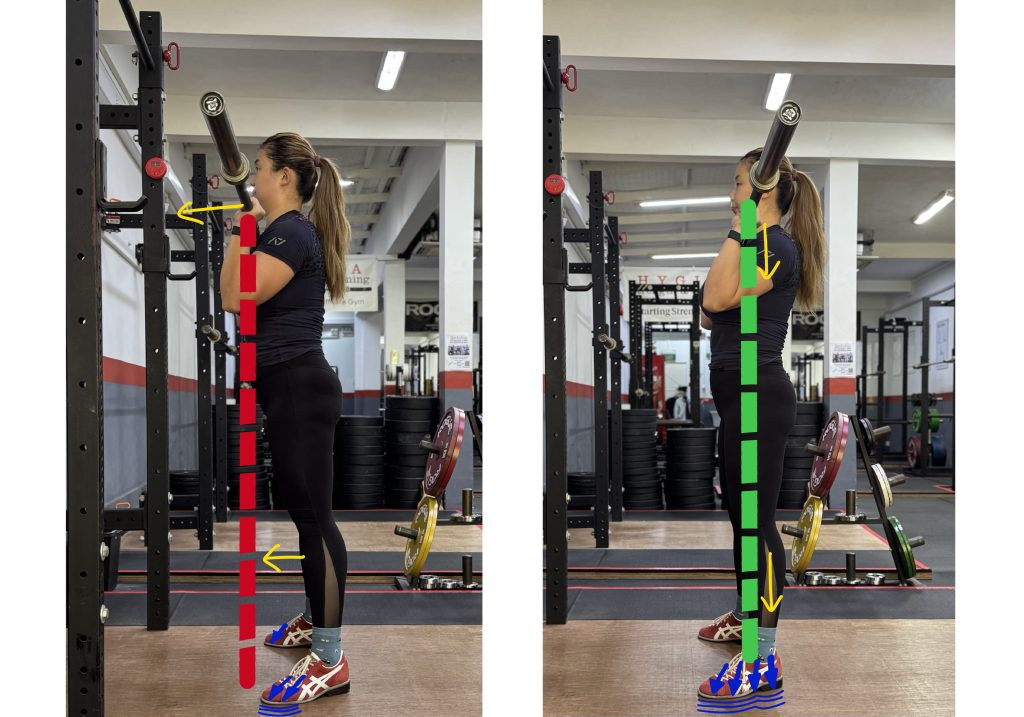
The stance you take requires the participation of your feet, so why are some of you always on your tippy toes, and leaving the heels out of the game? We instinctively reach forward, walk forward, and look ahead, engaging with our environment as we face it. It’s natural that we handle forward imbalances with more ease. Just try to tip yourself nearly out of balance towards your toes, and then to your heels. I’m sure one feels easier to handle than the other.
One of the most common issues new lifters face is misunderstanding the proper balance between the toes and heels. The point of balance – the midfoot – is where your body’s center of mass is in balance. Familiarising yourself with the sense of balance in every lift as early as possible will help prevent this bad habit from forming. As a lifter, it took me a long time to root my feet down properly while lifting. Even after a few years of training, these nasty sky-high heels lurk around the corner to tip me out of balance whenever my program approaches weights close to my personal bests.
While I’m emphasising the importance of your heels in your lifts, this doesn’t mean that I want you to shift all your weight onto your heels. Rather, I want to highlight the importance of applying a little more pressure on your heels to help you balance effectively through your sets. Here are three lift-specific cues that might help keep your pesky high heels down.
Heels in the Squat – Butt Behind Your Heels


If you’ve ever found yourself tipping forward during the squat, from warm ups through to the work set, you might have been balancing closer to your toes and getting too used to it, to the point of mistaking that is where it should be. This is a terrible habit that must be eradicated early. Your heels should stay grounded throughout the entire movement—right from the start, through the depth, and back up to the lock-out position.
Try starting your warm ups with the cue “butt behind your heels”. At squat depth, there is a little seat with the perfect shape of your tush that floats above the area right behind your heels, where your butt needs to sit on. However, it is your job to remember where this shelf is – don’t go any further back or lower!
Heels in the Press – Tight Legs!

Have you ever started a press, knowing that you will miss it before the bar clears your forehead? Despite setting up your arms in the most accurate position before lifting, it’s easy to lose focus on what’s happening below your arms during the press. Among the various reasons for a forward bar path, one of the simplest fixes is to ensure a stable base of support so you can start the lift perfectly balanced.
To set up for a stable connection with the ground, it all starts with tightly contracted legs. Your checklist should include these three key elements: squeezed thighs, locked knees, and toes actively clawing down. Actively contracting all the muscles in your legs and feet, coupled with locked knees, helps maintain balance beneath the upper body movement of the press.
Heels in the Deadlift – Rock Back (just a little)

When you bend over to pick up a small item you’ve dropped, the position you assume is somewhat like the deadlift. You might not have noticed, but chances are, you were on your tippy toes. Since most people have more experience with this position than with setting up for a deadlift, my guess is that inexperienced lifters often default into a stance that shifts their balance towards the toes, as it is a more comfortable position to assume.
While this might feel more comfortable, it almost always leads to a deadlift performed out of balance, or a missed attempt. By the time the lifter feels the barbell’s load, the combined weight of both the lifter and barbell would likely stay out of balance over the toes, or result in an unnecessarily tough grind towards lockout.
Next time you’re deadlifting, gently rock forward and backwards in your set up position and get a gauge on how much pressure is distributed across your soles. If the toes are feeling more pressure against the ground, you should realise by now that you were unknowingly defaulting to balancing forward of your midfoot. This is also the perfect moment to adjust the barbell’s position—roll it in so it touches your shins. You are now ready for a balanced
Mastering your sense of balance through every phase of your lifts – from setup to lockout – starts from your feet and involves your heels. Regardless of the lift, grounding your heels gives you the control and stability needed to push the needle towards better lifting form. Use them to ensure you start balanced, move in balance, and finish each lift perfectly.

